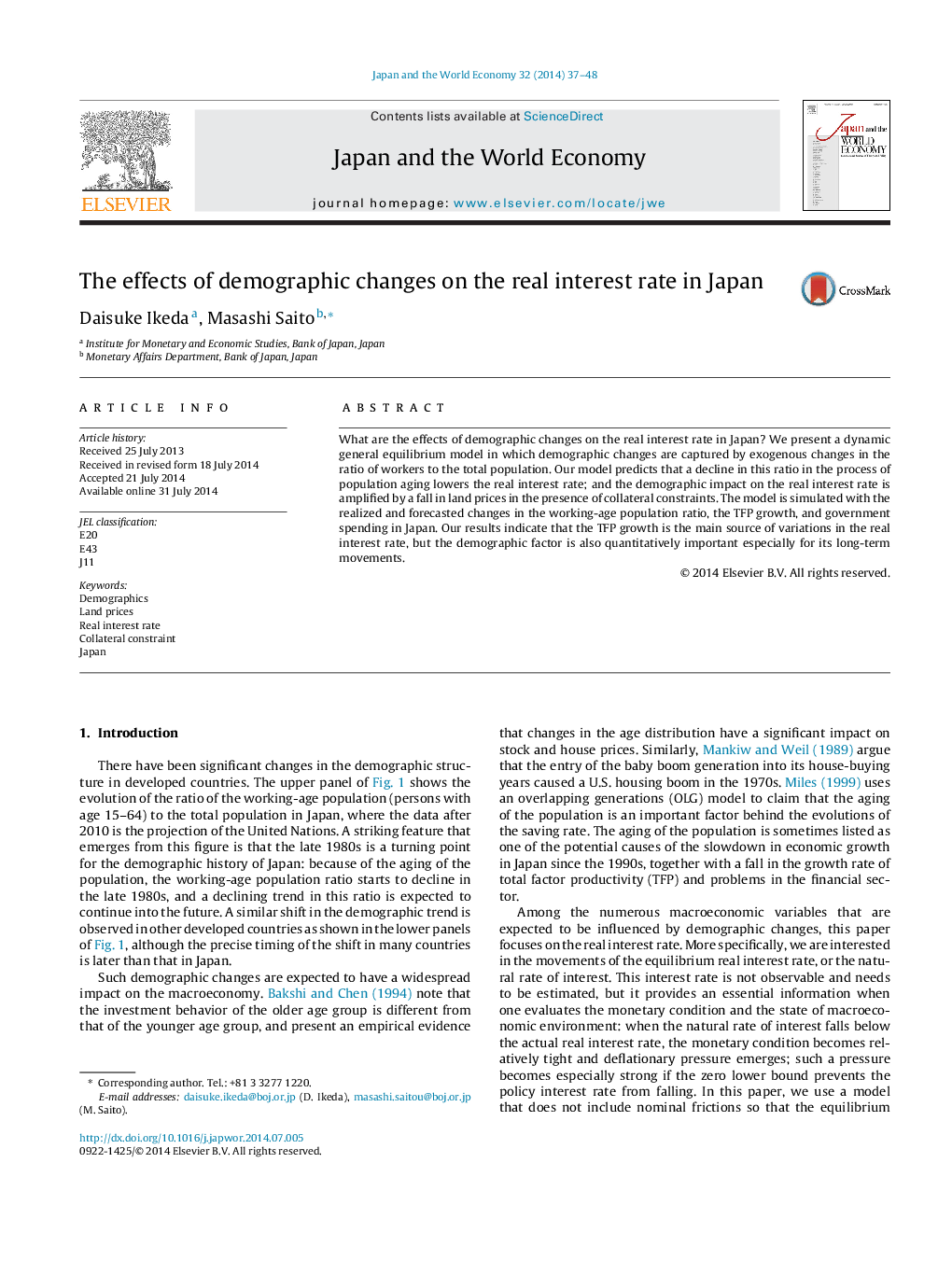| Article ID | Journal | Published Year | Pages | File Type |
|---|---|---|---|---|
| 5086114 | Japan and the World Economy | 2014 | 12 Pages |
â¢Model captures demographics by changes in the ratio of workers to total population.â¢A decline in this ratio in the process of population aging lowers the real interest rate.â¢A fall in land prices amplifies such impact in the presence of collateral constraints.â¢We simulate the model with the changes in demographics and TFP growth in Japan.â¢Demographics is important especially for the long-term movements in the interest rate.
What are the effects of demographic changes on the real interest rate in Japan? We present a dynamic general equilibrium model in which demographic changes are captured by exogenous changes in the ratio of workers to the total population. Our model predicts that a decline in this ratio in the process of population aging lowers the real interest rate; and the demographic impact on the real interest rate is amplified by a fall in land prices in the presence of collateral constraints. The model is simulated with the realized and forecasted changes in the working-age population ratio, the TFP growth, and government spending in Japan. Our results indicate that the TFP growth is the main source of variations in the real interest rate, but the demographic factor is also quantitatively important especially for its long-term movements.
